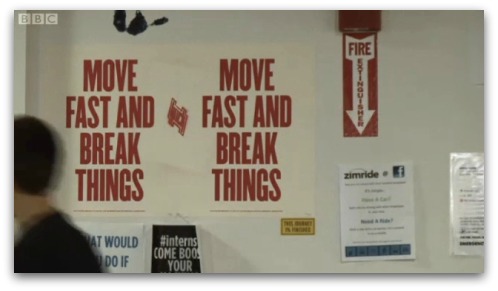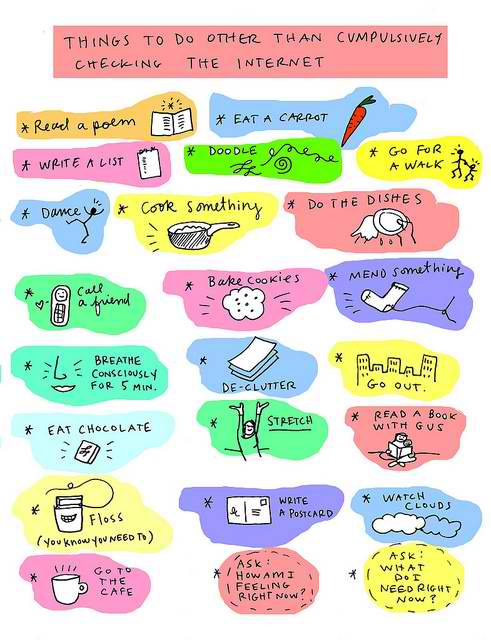How To Create Time:
1. Eliminate or reduce media.
2. Work offline.
3. Do less.
4. Don’t make appointments or schedule meetings.
5. Sleep in two shifts.
6. Make time less precious.
 I Done This Support
I Done This Support
Get It Done: The Best of the Internet
Here’s the weekly round-up of the best of the blog & links we’ve shared on the interwebs! Happy Friday!
We wrote The Art of Getting Stuff Done without Bossing Around last week but shh, we’re sneaking it into this round-up.
Find out how Any.DO, a start-up that made a task management app, uses us to get things done.
Srsly, what is innovation?
Research says leaders receive less stress.
Learn how to enchant your customers.
Pablo Picasso on Inspiration

“Inspiration exists, but it has to find us working.” — Pablo Picasso
Hope inspiration, or at least some ice cream, finds you working today!
The Peak Time for Everything
A growing body of research suggests that paying attention to the body clock, and its effects on energy and alertness, can help pinpoint the different times of day when most of us perform our best at specific tasks, from resolving conflicts to thinking creatively.
Sue Shellenbarger explores The Peak Time for Everything for WSJ.
Some takeaways: Nap around 2pm. Tired times make for better open-ended thinking. And retweeting chances increase between 3-6 pm.
Circadian and natural rhythms, and thus peak times for doing stuff, depend on the individual. Read on for some pretty interesting ideas on how to set your activity to your inner clock.
Felicia Day: Just Do It!
Stop planning to do that thing you want to do and just do it!
Felicia Day, Lifehacker, I’m Felicia Day, and This is How I Work
How Any.DO Marks Getting In Sync as Done
Any.DO is an elegant task management application available for Android, iPhone, and the Chrome browser. While the app has received praise for its simplicity and ability to sync across platforms, the Tel Aviv-based startup found that it needed some management tools to synchronize itself, with one of its founders, Omer Perchik, relocating to San Francisco. Plus, the company, which started in 2010, saw its team nearly double to twelve people.

Any.DO turned to iDoneThis to sync its team, and as co-founder Yoni Lindenfeld explains, to solve one of the challenges of fast growth — how to get all the newbies up to speed. “It’s a good tool to get new people coming on board to understand what other people are doing and to show other people what they’re doing.”
Communication and coordination are priorities for Any.DO, achieved through transparency regarding the inner workings of the company. “It’s really important for us for everyone to be involved and aware,” declares Yoni, as part of Any.DO’s tight-knit “family-style environment” work culture. These objectives led the Any.DO team to implement iDoneThis with a plan to be more specific in their daily entries. Yoni elaborates, “Before we started using it, we talked to everyone about how we would profit most from using it. It’s going great because people are writing more details about what they’re doing and other people,” —including new hires — “know more details. It’s a great tool.”
Tech/Life Balance is a Myth: The Best of the Internet

Here’s the weekly round-up of the best of the blog & links we’ve shared on the interwebs! Happy Friday!
How to use iDoneThis to leverage The Progress Principle.
Tech/life balance is a myth.
3 ways to think deeply at work.
Introverts are awesome leaders too!
Love is the way to, um, conquer your competition.
(photo via fuckyeahdogsoncomputers)
The art of getting stuff done without bossing around
The availability of seed-stage funding today means that there are a ton of first-time entrepreneurs out there assembling teams and building companies without any experience running a team or managing people. Building a team in this environment is especially difficult because funded companies typically grow teams prior to sustainability or product-market fit. It’s hard to steer the team in the right direction when you yourself don’t quite know what to build.

Naval Ravikant at AngelList has blogged about “Building a team that ships”, describing his assembled team as “self-managing people who ship code.” Naval calls this peer management: one person per project (with help from others as needed), no middle managers, and individual choice on what to work on using accountability is the rudder. In his words: “Promise what you’ll do in the coming week on internal Yammer. Deliver – or publicly break your promise – next week.”
At iDoneThis, we’ve seen peer management as an effective approach to take for the young startup CEO. We’ve worked closely with many first-time entrepreneurs like Danny Wen at Harvest and Tobi Lutke at Shopify who have succeeded in building unique, quirky, and profitable companies by empowering individuals at their companies to manage themselves and each other to build out great products exceeding a high standard of excellence. Here are some keys to effective peer management that we’re seeing.
Ray Bradbury says Action is Hope
Action is hope. At the end of each day, when you’ve done your work, you lie there and think, Well, I’ll be damned, I did this today. It doesn’t matter how good it is, or how bad—you did it. At the end of the week you’ll have a certain amount of accumulation. At the end of a year, you look back and say, I’ll be damned, it’s been a good year.
Ray Bradbury, in an interview with the Paris Review.
Maybe we should make an iDoneThis theme song out of these words, they’re so apt.
Intrigued by the Power of Kawaii? Us too!
Thanks to a study by Japanese scientists at Hiroshima University’s Graduate School of Integrated Arts and Sciences, titled “The Power of Kawaii: Viewing Cute Images Promotes a Careful Behavior and Narrows Attentional Focus”, you can be guilt-free when looking at photos of ridiculously cute animals at work. Published in the journal, PLOS ONE, the study found that viewing photos … Read more



